UNIT 1.5
PRODUCER BEHAVIOUR, COST AND REVENUE
PRODUCTION FUNCTION AND ISO-QUANTS
PRODUCTION
The term production means production of wealth. It can be defined as the process of adding value and utility to something. In simple words, production means producing of goods and services.
PRODUCTION FUNCTION
The physical relationship between the output of a good and the inputs (factors of production) required to produce that good is called production function. It is written as
Q = f(L,K)
Where Q is output, L is labour and K is capital
EQUILIRIUM OF PRODUCER
OR
OPTIMAL COMBINATION OF TWO FACTORS OF PRODUCTION
When a producer combines such a combination of two factors which yield maximum output for given cost or produces given output for minimum cost, it is called producers equilibrium.
A combination of factors which makes a producer to be in equilibrium is called optimum combination.
Equilibrium of producer can be defined in following situations
1. WHEN OUTPUT IS GIVEN
A producer will be in equilibrium when given output is produced with minimum cost.
2. WHEN COST IS GIVEN
A producer is in equilibrium when maximum output is produced with given cost.
CONDITION OF PRODUCERS EQUILIBRIUM
The equilibrium of producer is determined at a point where Iso-quant is tangent to Iso- cost curve
EXPLANATION OF PRODUCERS EQUILIBRIUM
The equilibrium of a producer can be explained by using the concepts of iso quant and iso cost curves.
ISO-QUANT
A curve that shows different pairs of two factors of production which give equal level of output
|
| In the diagram three iso-quant curves IQ1, IQ2 and IQ3 are plotted. Conceptually the higher iso-quant curve shows the higher level of satisfaction and lower iso-quant shows lower level of output. Therefore IQ3 shows more output level than the IQ1. |
ISO-COST
A curve which shows all the pairs of two factors of production, the cost of which is the same.
|
| In diagram AB line is the iso-cost line, it shows all the pairs of K and L for which the cost of the firm remains same. A producer can purchase any of these pairs for given budget. A pair of capital and Labour on the right side of Iso-cost line eg. Combination L is not Purchasable. Any pair below the iso-copst line is purchasable but with smalloer cost. |
EQUILIBRIUM WHEN OUTPUT IS GIVEN
In this situation equilibrium is at a point where IQ becomes tangent to lowest Iso cost
|
| The equilibrium of the producer is at E where iso-cost line AB is tangent to given IQ. The output level shown by IQ can be produced at point L, but it shows higher cost for same output level. On the other hand this output level cannot be produced at CD iso-cost line. Therefore equilibrium of producer is at point E. |
EQUILIBRIUM WHEN COST IS GIVEN
In this case equilibrium is at a point where given is iso-cost is tangent to the highest IQ.
|
| In this diagram cost or budget of the producer is given and shown by AB iso-cost line. Given this budget, a firm cannot produce IQ3 level of output as it is beyond the reach of the producer. On the other hand if firm produces at point K, it will only get output level of IQ1 which is not best level of output. Therefore equilibrium of producer is at point E. |
FACTORS OF PRODUCTION
LAWS OF RETURNS
LAW OF INCREASING RETURNS
Law of increasing return discusses initial changes in production when units of variable factors are applied to a fixed factor.
This law can be stated in the following words:
“If Successive units of variable factors are applied to a fixed factor then up to a point the marginal product of the factor will increase, this is called law of increasing return.”
| Table
| This table explains the law of increasing return. According to this table when first unit of variable factor is applied to the 10 units of fixed factor, its marginal product is 10 but when 2nd unit of the variable factor is applied then this produces additional 20 units thus marginal product of every next unit of variable factor goes on increasing under the law of increasing return. |
Note: Student should draw a diagram of the law by using figures in above table and then write its explanation.
LAW OF DIMINISHING RETURNS
The law of diminishing returns simply refers to a principle of combination of the factors. In a general way, it can be stated that if a variable factor is combined with some fixed factors, the average and the marginal return for that variable factor will diminish, Benham states the law thus:
"As the proportion of one factor in a combination of factors is increased, after a point the average and marginal product of that factor will diminish."
This is due to the fact that the combination does not represent a correct proportion of the factors. There is too much of one factor in relation to others. When proper balance is restored the law of diminishing returns will no longer operate.
| Table
| This table explains the law of diminishing returns. In this table we assume that law of diminishing returns starts from the very first unit of variable factor although in practice its application starts beyond the optimal combination of fixed and variable factors. According to this table when first unit of variable factor is applied to the 10 units of fixed factor, its marginal product is 50 but when 2nd unit of the variable factor is applied then this produces additional 40 units thus marginal product of every next unit of variable factor goes on decreasing under the law of decreasing returns. |
Note: Student should draw a diagram of the law by using figures in above table and then write its explanation.
CAUSES OF DIMINISHING RETURNS
There are many causes which are responsible for the law of diminishing returns.
(i) Fixed productive capacity
The fertility of land and the productive capacity of machinery have fixed maxima. Employment beyond a point overstrains the fixed factor (land or machinery). This results in diminishing returns.
(ii) Scarcity of the factors.
The supply of the various factors of production beyond a point becomes relatively inelastic and if demand continues to increase the prices of these factors will rise. In the words of Chapman, "The expansion of an industry, provided that additional supplies of some agent in production which is essential cannot be obtained, is invariably accompanied at once or eventually by decreasing returns, other things being equal."
(iii) Limited capacity for organization and supervision
Even if it were possible to increase productive capacity indefinitely and to substitute one factor for another, the diminishing returns would still ultimately set in. This is so,
because the work of supervision and organization, after a point, would become
so heavy and cumbersome that it becomes difficult for a single farmer or
entrepreneur to manage.
(iv) Defective combination of factor
Beyond a point of optimum combination, diminishing returns set in.
(v) Imperfect substitutes
Factors of production cannot be substituted for one another. As Mrs. Robinson says, "What the law of diminishing returns really states is that there is a limit to the extent to which one factor of production can be substituted for another. That is why beyond a point law of diminishing returns sets in. The additional supply of factors cannot be arranged.
WHY THE LAW SPECIALLY APPLIES TO AGRICULTURE
The law of diminishing returns specially applies to agriculture and other extractive industries. One thing that is common to all these industries is the supremacy of nature. It is, therefore, often remarked that the part that nature plays in production corresponds to diminishing returns and the part which man
plays conforms to the law of increasing returns. The inference is that agriculture,
where nature is supreme, is subject to diminishing returns, while industry, where
man is supreme, is subject to increasing returns.
Besides the supremacy of nature, there are several other reasons why agriculture is subject to the law of diminishing returns. The agricultural operations are spread out over a wide area, and supervision cannot be very effective. Scope for the use of specialized machinery is also very limited. Therefore, economies of large-scale production cannot be reaped.
In the case of manufacturing industries, man's creativity has the fullest scope to show itself. By the introduction of division of labour, use of the most modern appliances, and concentration of workers under one roof which renders supervision easy and effective, economies, internal and external, become possible and thus hold the diminishing returns not to operate for long period of time. But it is wrong to say that agriculture is always subject to diminishing returns and manufacturing industries always to increasing returns. The law of diminishing returns applies everywhere. The law is as universal as the law of life itself. Its application is not confined to agriculture only: it applies to manufacturing industries too. If the industry is expanded too much and becomes unmanageable, supervision will become lax and the costs will go up. The law of diminishing returns will therefore, set in. The only
difference is that in agriculture it sets in earlier and in industry much later.
CONCEPT OF COST AND COST CURVES
The concept of cost which is most commonly used in economics is that of money cost of production.
MEANING OF COST
Expenditure which a firm incurs for producing some commodity or service are called cost of production.
Following are important concepts of cost.
1. Variable Cost
Variable or prime costs are those costs which vary with changes in production. eg wages paid to the labour and price of the raw material. Variable costs cease as soon as the production is stopped.
2. Fixed Cost
Fixed Costs or supplementary costs are those costs which do not change with change in production. The entrepreneur has to bear these costs even when there is no production. They include the costs of constructing building or installing machinery.
3. Total Cost
Total cost is the total amount of money spent upon the production of a given volume of output.
In the short run
Total cost = Fixed cost + variable cost.
and similarly ATC = AFC + AVC. i.e., Average total cost is equal to sum of average fixed cost and average variable cost.
5. Marginal costs:
The cost of producing an extra unit of output is called marginal cost. Or it is the change in total cost due to change in production.
SHORT RUN COST CURVES
SHORT PERIOD COSTS:
Short run period is that in which supply of goods can be changed only by changing variable factors of production.
In short run period some of the factors are fixed and some of the factors are variable. Those factors whose supply is given and fixed are called as fixed factors. Such factors include machinery, building etc. The cost of such factors is called fixed cost of production. On the other hand those factors whose supply can be changed are called variable factors. such factors include raw material, labour etc. The payments made to variable factors is known as the variable costs.
The costs of production and relationship between them can be further explained with the help of this table.
Table
| Output | FC | VC | TC | MC | ATC | AVC | AFC |
| 0 | 10 | ------ | 10 | ------- | ------- | -------- | ------- |
| 1 | 10 | 50 | 60 | 50 | 60.00 | 50.00 | 10.00 |
| 2 | 10 | 90 | 100 | 40 | 50.00 | 45.00 | 5.00 |
| 3 | 10 | 120 | 130 | 30 | 43.33 | 40.00 | 3.33 |
| 4 | 10 | 140 | 150 | 20 | 37.50 | 35.00 | 2.50 |
| 5 | 10 | 150 | 160 | 10 | 32.00 | 30.00 | 2.00 |
| 6 | 10 | 170 | 180 | 20 | 30.00 | 28.33 | 1.67 |
| 7 | 10 | 200 | 210 | 30 | 30.00 | 28.57 | 1.43 |
| 8 | 10 | 240 | 250 | 40 | 31.25 | 30.00 | 1.25 |
| 9 | 10 | 290 | 300 | 50 | 33.33 | 32.22 | 1.11 |
| 10 | 10 | 350 | 360 | 60 | 36.00 | 35.00 | 1.00 |
The table shows that at “0” output level the firm only incurs fixed cost, and this cost remains unchanged for all the units of output. The variable cost of the firms changes with change in production. In the beginning of production variable cost increases at decreasing rate and then it increases at increasing rate. The total cost of a firm in short run is the sum of fixed and variable costs. Marginal cost is change in total cost due to change in production, In the beginning MC decreases and then increases with increase in production. ATC, AVC and AFC are calculated by dividing respective Total costs with units of output.
When the different values of various costs are plotted against different units of output, the different cost curves look like as in the following diagrams.
|
|
|
In the diagram on left, TC and TVC and TFC are plotted. The TC and TVC curves initially rise at decreasing rate and then at increasing rate. The
FC curve is parallel to x-axis thus shows constant FC at all output levels.
In the diagram on right MC, AC and AVC are marginal, average and average variable cost curves respectively. These costs initially fall and then start increasing. Therefore these curves become curve similar to 'U'. Some times called U shaped cost curves.
RELATION BETWEEN MARGINAL COST AND AVERAGE COST
When average and marginal cost curves are drawn together on the same plane it becomes obvious that when average cost curve is falling marginal cost curve lies below it and when average cost curve is at its minimum marginal cost curve cuts it from below and when average cost curve is rising marginal cost curve lies above it.
CONCEPT OF REVENUE
MEANING OF REVENUE
The amount of money which a firm receive by the sale of a given amount of output is known is the revenue of the firm.
TOTAL REVENUE:
Total revenue refers to the total receipt of the firm from the sale of a certain given volume of output. It is calculated by multiplying total output by price per unit of that commodity.
TR = P x Q
AVERAGE REVENUE:
It is the revenue per unit of output sold. Average revenue is calculated by dividing total revenue by the total output sold.
MARGINAL REVENUE:
The marginal revenue is the change in total revenue by one unit change in quantity sold.
Total revenue, Average revenue and marginal revenue behave in different manners under different types of market conditions.
REVENUES OF FIRM UNDER PERFECT COMPETITION:
Competition is said to be the perfect when individual firms in the industry have no control over the price of the commodity. In other words, the firm has to take the prevailing price as given, which they cannot change by their own action. Perfect competition is a result of following conditions.
(1) Large Numbers Of Buyers And Sellers.
(2) Homogeneous Commodity:
(3) Free Entry And Exit:
(4) Perfect Knowledge:
When these conditions are met in a market the market is said to be perfect and the price prevailing in the market is same for the same product. In such situation firm can sell as much as it likes at the prevailing price and buyers can buy as much as they like at the prevailing price. In such a situation Total, average and marginal revenues of the firm are as shown in the table.
|
|
This table shows that under perfect competition average and marginal revenues are same and they are equal to price per unit of the commodity. If e draw a diagram of average and marginal revenue curves under perfect competition we get a straight line parallel to x_axis.
In this diagram Price, average and marginal revenues are plotted on Y_axis and output is taken on X_axis.
AR = MR is line shown the average and marginal revenue of the firm.
REVENUE CURVES UNDER MONOPOLY:
Monopoly is a situation in which there is only one seller of a commodity in the market and the commodity sold has no near substitutes.
Due to this reason buyers have to buy this product from the monopolist or go without it. Being the sole supplier of the product the monopolist is thus in a position to fix up a price to his advantage. When monopolist fixes up price of his product he has to leave the amount sold at this price to the will of the buyers. The market demand can be high or low at this price according to willingness to buy of people. On the other hand he can fix up the amount which he would like to sell and let the price be determined by the market demand. However under no conditions can he do both the things. This means either he can control the price or the supply of the product.
REVENUE CURVES :
Under monopoly since there is one seller in the market there is no distinction between the industry and the firm. Therefore under the conditions of monopoly, an increase in the supply of output by a firm would reduce the price per unit in the market. Thus behavior of total, average and marginal revenue curves under monopoly can be understood from the following table.
|
|
The table above shows that average revenue is falling when the sale of output is increases. It is also clear that total revenue is increasing at a decreasing rate and as a result marginal revenue is also falling as the sale of output increases.
In the diagram average revenue and marginal revenues are measured along Y_axis and output is measured along X_axis. The AR and MR curves show average and marginal revenues respectively. These curve are downward sloping from left to right. The marginal revenue curve lies below the average revenue curve showing that marginal revenue falls at greater rate than the average revenue. Average revenue curve is also the demand curve of the firm which shows that demand for the product of the monopolist increases only with the fall in price.

